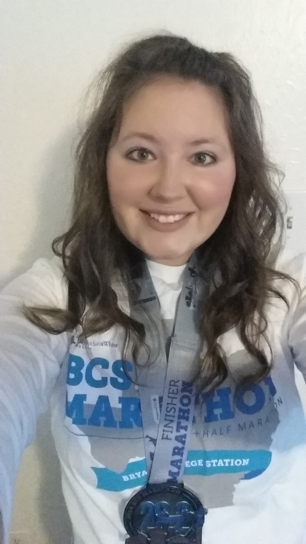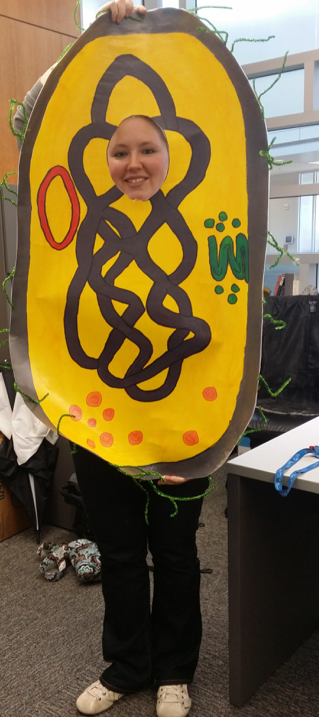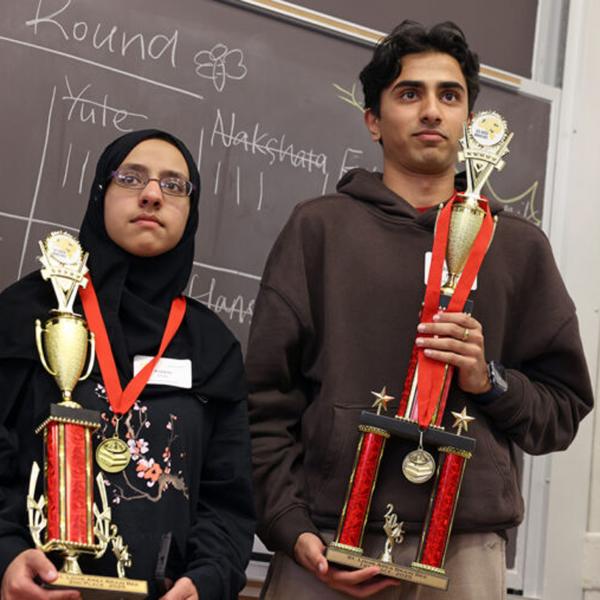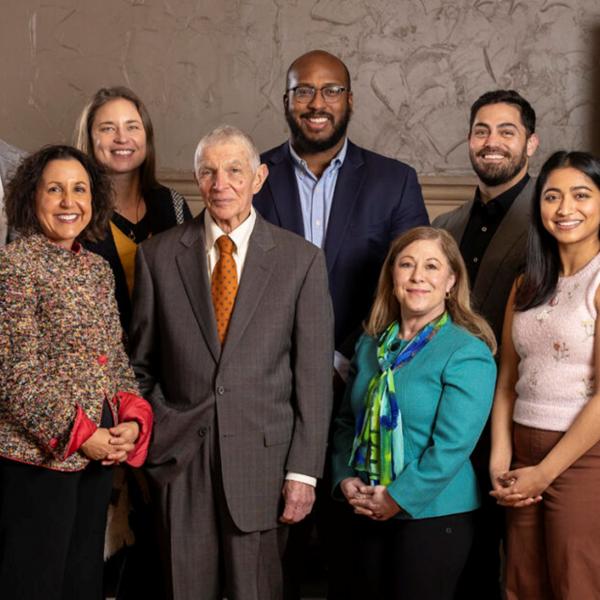Since she was a young child, Sarah Beagle enjoyed asking questions. Now in the Levin lab as a postdoctoral research associate, Beagle is asking how microbes adapt to pH changes.
Meet Sarah Beagle. Runner. Kansas Jayhawks fan. And now the newest member of Professor Petra Levin’s lab looking to answer the question: how do microbes adapt to pH changes?
“There's a wide pH range in the human body that bacteria are exposed to. They have to be able to adapt to survive,” said Beagle.

College Station Marathon in 2014
PC: Sarah Beagle
Building on work performed by former PhD student in the lab, Elizabeth Mueller, who studied pH adaptation in E. coli, Beagle is now interested in extending those studies to ESKAPE pathogens.
ESKAPE pathogens are defined by an acronym for the genus names of each of the six bacterial species that are resistant to the most commonly used antibiotics. Some are resistant to every know antibiotic. Beagle is interested in how these pathogens survive different environments.
Beagle joined the biology department five months ago after completing her PhD at Texas A&M University in College Station, Texas in the laboratory of Dr. Steve Lockless studying bacterial potassium channels. She learned about Petra Levin’s work during a bacterial physiology course that exposed her to basic physiology that the Levin lab works on.
WashU’s geographical location was also a big draw for Beagle who grew up in Kansas and attended her alma mater Washburn University in Topeka, Kansas. Being back in the Midwest was an opportunity for Beagle to be closer to home.
Joining the Levin lab in the midst of a pandemic has come with some important lessons. Despite the restrictions that have significantly hindered the speed with which she can get her project up and running, Beagle appreciates the forced time outside of the lab.
“Spending 12 hours in the lab does not always equate to 12 productive hours. The pandemic has made me slow down and prioritize the important experiments. I am really taking the time to plan my experiments and be efficient with the less time I have in the lab. It's also allowed me to catch up on literature reading,” said Beagle.
In fact, recently she read a paper where researchers found that the model organism Bacillus subtilis (an organism commonly used in the Levin lab) actually has circadian rhythms.
“Bacteria are full of surprises!” commented Beagle with excitement and curiosity.
“Bacteria are full of surprises!”
Asking questions

gram-negative
"cell-fie". PC: Sarah Beagle
Beagle’s curiosity for science started at an early age. For an elementary school science project, she sprayed tin cans with different colors, filled them with water, and asked which color would be the hottest sitting out in the sun.
“I hypothesized that it would be red,” said Beagle.
It was black. But she was convinced she was doing the experiment incorrectly. In support of Beagle’s curiosity, her parents bought her different shades of spray paint so she could redo the experiment.
“After a few attempts with no change in the result, my parents told me the results are the results,” recalled Beagle with a smile.
Being wrong didn’t turn Beagle away from becoming a scientist.
“This is the only job I’ve ever had that pays me to ask questions. I worked all through college. I had two jobs and went to school full time. I’ve worked in a variety of clinical settings and they are all challenging and rewarding in their own way, but there is something about getting to ask questions and getting paid to answer them that is super fun,” said Beagle.
The fourth grader that drove her parents crazy with questions has found her dream career path.




